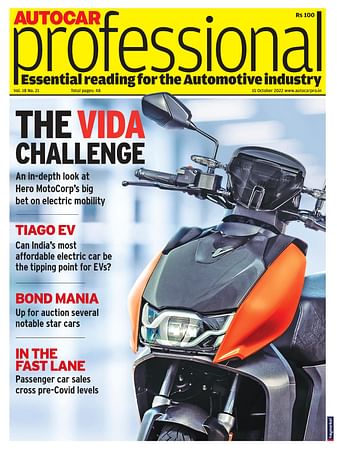Energy harmony in new-age mobility
The fast-evolving e-mobility ecosystem is expanding due to the trident of techno-economic drivers, regulators and stakeholder partnerships.
New-age mobility will continue to evolve from its current state based on our ability and agility to innovate platform solutions for our customers and by balancing energy resources.
Mobility, besides transportation from one point to the other, is about the experience, safety, economics – use & pay, shared or single ownership, ease of travel, travel time, comfort, connectivity, communication and eco-friendliness – end of life, recyclability and lower tailpipe emissions.
E-Mobility data shows that China is leading with about 55 percent of the two million electric four-wheeler vehicles, followed by the US at around 20 percent and then the rest of the world. The global e-car market was at about 5 million in 2018, which has grown by 40 percent over 2017 sales. For light duty vehicles, the number of chargers grew to more than five million. The electric two-wheelers grew to more than 300 million by end of 2018 and will possibly grow in India with the recent government announcements.
Another study forecasts that in public transportation, e-buses will reach un-subsidised upfront cost parity with diesel buses by 2030. By then, battery packs will probably only account for eight percent of total e-bus price, down from around 26 percent in 2016. Consequently, EV sales are projected to increase 10-fold by 2025. Sales will surge to 30 million in 2030 in emerging countries, especially India and China.
Challenges ahead
With this sort of growth in e-mobility, the biggest challenge would be the energy harmony and the enabling charging infrastructure. The investments that will have to be made in future mobility to sustain this growth and demand in different parts of the world will be humongous. Studies also forecast that the wind and solar energies are set to surge to a ratio of almost 50:50 and will be 50 percent of world generation by 2050. These projections are based on reductions in infra and operational costs, and technologically innovative evolutions that will bring in cheaper batteries. This will have to be balanced between domestic demands, industries and transportation. Having said that, 700 million people will still not have power by 2030, but, of the 35 percent of new households that do, 10 percent will use solar home systems & about 20 percent will benefit from micro-grids, as per research data.
The year-to-date investments in the oil infrastructure is an indication that the ‘diesel-gasoline’ convention mobility will cohabit with new-age mobility, other efficient off-road and on-road equipment. The transition to a new-age ecosystem will grow steadily and help investors re-shuffle their portfolios.
AI tools and techniques leverage Big Data, data lakes and analytics that open avenues to the sources of geographical exploration of relevant enabling energy sources, raw materials for batteries and ultra-capacitors, charging infrastructure for e-mobility, opportunity to process fuels and the logistical framework of bringing this energy to the door step of the consumer. Surprisingly, hardly four percent of analytics is leveraged to understand consumer needs of alternative powertrains.
E-mobility: Rapidly evolving dynamics
The changing trend of personal mobility is rapidly evolving from vehicle ownership to a shared vehicle paradigm. Even the goods transportation business models have started to change to co-sharing payloads between multiple locations and use other modes of shipping besides conventional trucks. This onset of shared mobility along with autonomous driving accentuates the need of smart, and safer systems to meet customer aspirations of the ‘digital traveller’. In addition, the vehicles are connected to the ecosystem through V2X playfields that provide tremendous flexibility and autonomous decision making.
The fast-evolving mobility ecosystem is expanding due to the trident of techno-economic drivers, regulators and stakeholder partnerships. The holistic innovations will be fostered using AI, as we continue driving into the future.
RELATED ARTICLES
Expect the unexpected
The price band of Rs 60k to Rs 90k seems to be emerging as a sweet spot for punters in the market for electric vehicles....
Better safe than sorry
While active and passive safety systems vary in cars depending mostly on price points one cannot deny the fact that with...
The EV Safety Conundrum
Aravind Subramanian, Consultant, Avalon Consulting & Subhabrata Sengupta, Executive Director, Avalon Consulting address ...






 30 Mar 2021
30 Mar 2021
 6345 Views
6345 Views








 Autocar Pro News Desk
Autocar Pro News Desk




